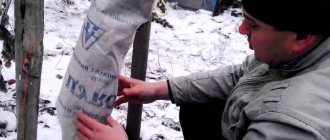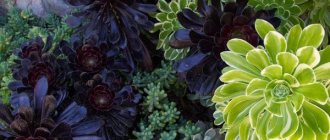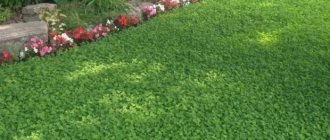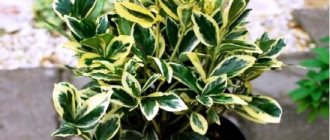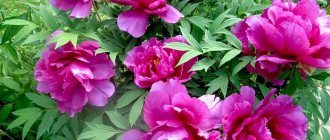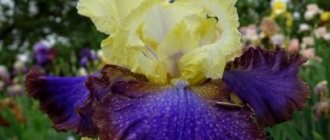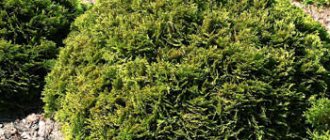Japanese maple: description and varieties of red maple, planting and care + photos
Amateur gardeners and landscape designers are sensitive to rare ornamental plants. The Japanese maple can become the pride of every garden. Its natural distribution range is limited to the islands of Japan, the South Korean coast and the Russian island of Kunashir. It grows more often in mountainous areas.
Growing this tree crop requires certain knowledge and precautions. How to properly plant and care for a heat-loving plant.
Description of Japanese maple
In natural landscapes - a deciduous tree or shrub up to 10 meters high. The bark and branches are colored reddish-gray and are smooth.
The leaves are like those of our maple - dissected to half the diameter into several segments (from 7 to 11), large (coverage up to 15 centimeters). Depending on the variety, the dissection of the leaves can be different, sometimes they are very feathery. The petioles on which the leaves grow, 3-5 cm long, may be pubescent.
Due to the magnificent color of the leaves, this type of maple has become so popular; the crowns of the Japanese beauty fly like red flames in the middle of the garden. Some of its species have a crimson-red foliage throughout the growing season, others change color from green to yellow and crimson.

The bright, small flowers appear earlier than the leaves in spring. From them lionfish are formed. These are seed fruits up to 3 centimeters long, with the help of which plants of this genus reproduce.
Eastern maples are grown in open ground and in special tubs.
Types and interesting varieties
Japanese maple has several subspecies, and breeders have developed amazing varieties that no one can pass by indifferently. They differ in the shape of the tree and leaves, and their demands on living conditions. There can be both tall and short specimens.
It should be noted that culturally bred varieties are much more picturesque and are found much more often than basic natural varieties. In addition to the main species described above, others are also grown.
Fan-shaped (palm-shaped)

The tree, original in shape, has a spreading crown with beautiful, carved leaves. The long-lobed leaves have a lacy outline and remain golden yellow or red throughout the season. Having shed its foliage, this plant remains a decoration of the garden, thanks to its graceful branches. It blooms red in June; many varieties have been created based on it.
Shirasawa Maple

A rare variety up to 15 meters high, there are shrubs with a low-growing outline. The leaf blade is not very dissected, large. A striking representative of this species is Aureum. This shrub grows up to 4 meters high and has a yellow-orange leaf with a border around the edge. The variety is quite winter-hardy, but they also like to cultivate it in tubs.
Aconitofolia

Gorgeous maple, almost completely dissected leaves are green in summer. In autumn the tree turns purple.
Orange Dream
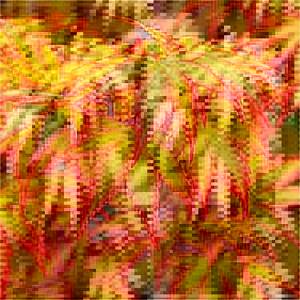
Yellowish-green leaves with a red border are painted in a red-orange color. Orange Dream grows quickly and is tall.
Bloodgood

A very decorative shrub with delicate outlines of dark red leaves, almost inky in color. Even in the shade it does not lose the dark color of the foliage.
Mikawa yatsubusa

Height 1.5 meters, bush dense and squat. The leaves are needle-shaped, green in spring, scarlet in autumn.
Shaina

One and a half meters in 10 years - this is the height this tree grows. It is distinguished by a dense bushy crown, its leaves are deeply cut. When it turns blood red in color, it becomes especially attractive. Shaina is planted in containers, decorating terraces and verandas, and the halls of houses.
Kiyohime
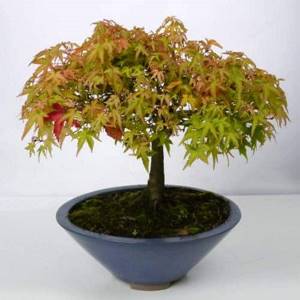
The Japanese red maple variety reaches 1.8 meters in adulthood. Green leaves are edged with red and cut. Retains color saturation in partial shade.
Beni Kawa
The leaves are light, the original red bark.
Dissectum Garnet

The finely dissected conifer-like leaves are green in spring, becoming reddish-purple or orange-yellowish in autumn. The huge crown coverage, almost twice the height, gives the tree a very beautiful, attractive appearance. Such drooping varieties of shrubs should be placed near ponds or gazebos.
Aka shigitatsu sawa
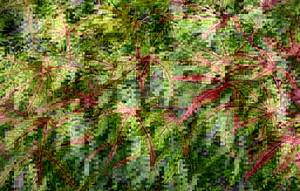
The tree is 3 meters or so tall. This plant has peculiar pink or red dissected leaves. Loves partial shade.
Wilson's Pink Dwarf

The fan maple variety is not very winter-hardy. The height of the bush in adult form is 2.5 meters, the coverage is 1 meter less. The leaves grow on red branches and are orange in color.
Shirazz
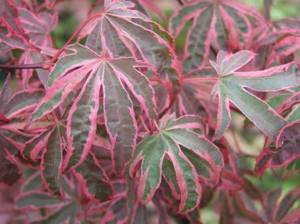
Deeply dissected green leaves with pink or red borders give a spectacular appearance. Towards the end of the season it changes color to purple.
Growing
Although the procedure for planting a Japanese maple seedling is simple, it does, however, require knowledge of some nuances. Let's talk about these nuances in more detail.
To plant a plant correctly, you need to prepare in advance:
- the seedling itself: healthy and strong;
- compost and peat for fertilizer.
First, you should dig a hole: its parameters should be approximately twice the span of the plant’s roots. If the seedling was purchased in a pot, then it must be carefully removed from this container. Unravel the roots of the plant: also very carefully, without tugging.
Add peat and compost to the prepared hole. Place the seedling in the hole, sprinkle soil on top, and tamp it down.
Video: planting a tree
In the video - planting a Japanese maple:
Around the seedling, form small sides of soil along the diameter of the root circle. This will make it easier to water the plant, as the water will not be able to drain.
Immediately after planting a maple or decorative mulberry, water the seedling so that the roots take root faster. If the summer turns out to be very hot, the seedling will need to be watered more often and more abundantly.
Next spring, it is necessary to lay a mulch layer of soil mixed with rotten fallen leaves over the root circle of the plant. This layer will help moisture stay longer in the root circle and also protect the ground around the seedling from weeds.
You can see what the New Year's glowing trees look like in the photo.
But you can see what fast-growing hedge plants look like in the photo.
What kinds of hedge plants there are, and what they look like, this information will help you understand: https://2gazon.ru/postroiki/zabory/zhivaya-izgorod/bystrorastushhie-kustarniki.html
The photo from the article will help you understand how to make a willow hedge with your own hands.
Where to buy seedlings, where and how to plant
You should not buy Japanese maple seeds online from unknown sellers. It is advisable to come to a nursery or store engaged in certified sales and buy a tree.
It is better to purchase a seedling in spring or autumn; you need to make sure that the bush is not damaged. It must be planted immediately.
Japanese maple varieties love diffused shade and permeable soil. There is no need to choose too alkaline soils and treat the soil with lime.
The soil should be fairly fertile or slightly acidic, and always loose.
Landing
- A hole is dug twice as large as the root system of the plant;
- Pour drainage into the hole, then humus or compost with peat;
- Moisten and straighten the roots, place the tree, sprinkle with soil and water;
- To preserve moisture, mulch the tree trunk area.
Reproduction
Produced by seeds, both in nature and under cultural conditions. Seed material must be fresh.
- Before planting, the seeds are stratified by placing them in sand (it should not be wet) and kept in a cold room all winter;
- In spring they are planted in containers with special soil; they can be treated with growth stimulants;
- In autumn, the strongest shoots are left to overwinter in a cool place in the same container, where the temperature is always above zero;
- Next spring, transplant the shoots into separate pots;
- Plant seedlings that have reached 30 centimeters in a permanent place - in open ground, a tub or a pot.
Working with cuttings
A faster way to create a maple bonsai with your own hands is to take a ready-made tree cutting and transform it.
- The prepared twig is prepared in early summer: choose the one you like, it should not have a formed bark.
- At the base of the cutting, a circular cut is made in the skin and rough woody part. This is where the roots will develop. A second similar incision is made 2-3 cm higher than the first.
- Remove the bark and hard part between the cuts.
- A root-forming hormone in the form of powder or gel is applied to the cut area.
- To activate the work of the substance, moistened sphagnum moss is attached to the treated cut, sealed with polyethylene and left in a dark, cool place.
- After a few weeks, the roots themselves will appear through the applied protection, then the bandage can be removed.
For germination, you can use a mixture of good compost and sand: place the cut part of the cutting into the moistened substance until roots appear.
After the formation of firm roots, the cuttings are separated from the mother branch.
Escape landing
Take a pot with drainage holes, pour round pebbles and soil (80% crushed bark and 20% peat) into it in an amount sufficient to securely fix the tree. The thin bark of the shoot is removed without disturbing the integrity of the roots, and the exposed part is placed in the ground.
You can add a little sphagnum moss to the soil. It serves as a fertilizer and softens hard water, which provides gentle care for the root system.
To strengthen the fixation, a peg is stuck into the pot, to which the young tree is tied.
Growing bonsai with your own hands using cuttings is only possible in cases where the tree is planned to be placed outdoors. Even proper care cannot replace a wild tree’s native elements. During the period when the foliage color changes, the composition can be brought into the house, but for no more than 1-2 hours.
Japanese maple in landscape design
Its low growth allows it to be successfully grown in containers. The advantage of this method is that the container can be moved from one place to another, saving it from the sun or removed for the winter, and also from time to time placed in different parts of the garden.

Pots are also placed on stands to make them more visible. Need I mention that the slow-growing tree is used to create bonsai. They are formed by special cutting, using wire and other techniques.
The home location of the maple dwarf is favorable for indoor air. It moisturizes, gives oxygen and pleases with flowering.
Red maple is an excellent partner for other garden plants in the garden. It does not have a very powerful root system and does not suppress nearby crops.
Combines with shrubs, flowering and cereal crops. The garden’s exclusive appearance is given by its proximity in the autumn, when the green leaves of other trees stand next to the purple and orange caps of the “Japanese”.
Rocky Japanese-style gardens, rock gardens, rock gardens, the roof of a building, a lawn - everywhere the maple tree will be the central figure. These beauties can also be planted along walking paths.
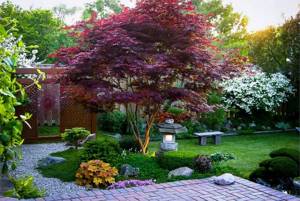
The surrounding area and the banks of small artificial reservoirs can be decorated with a picturesque bush planted nearby.
Characteristics and varietal diversity of the crop
The eastern perennial grows from 1 to 10 m, while its growth increases quite slowly. The main decoration of the maple is its luxurious spreading crown, which even after the leaves have fallen looks elegant thanks to its thin branches. Depending on the variety, the color of the leaf blades can be green, red, pink, crimson, orange, golden - and this is not the whole palette of shades. The crown can change color with the seasons. The shape of the leaves resembles those that grow on a palm tree, or a fan. The difference is noticeable when comparing different types of maple.
The tree blooms with small red or yellow-green flowers, and then forms winged fruits. Today, at least 150 varieties of the crop are known. In ornamental gardening and landscape design, the following maple varieties and hybrids are especially in demand:
- Shirasawa - reaches 1.5 m and forms wide orange-yellow leaves;
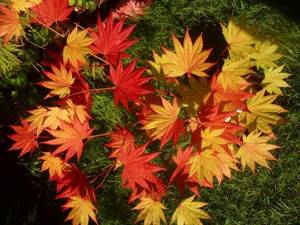
- Beni Kava - the tree is almost completely painted in rich shades: the bark is ruby, the foliage is deep red;
- Katsura - in autumn its green crown turns golden;
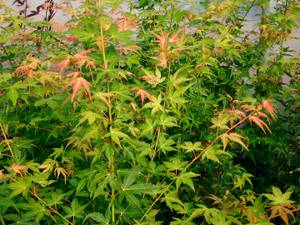
- Bloodgood - a unique maple with black leaves;
- Mikawa yatsubusa - the needle-shaped blades of the leaves of this variety transform from bright green to orange-scarlet by autumn.
Type of maple for bonsai
You can grow a small tree from pine, sakura, bamboo, willow, elm, lilac, lemon, spruce, ficus. Plant growers experiment with different types of plants; the principle of creating any specimen is to work with the root layering system and special care of the crown.
Maple bonsai can be grown at home from different types of wood:
- Rocky;
- Field;
- Ash-leaved;
- Palm-shaped;
- Platanolifolia.

Dwarfs of the above species have small leaves, which looks most organic on bonsai trees.
Colored specimens have been bred for growing these trees at home. These include:
- Maple blue or blue;
- Japanese red;
- Violet.
The art of bonsai is in high demand among flower growers and summer residents, because the industry is constantly developing, breeders are developing new types of maples with different leaf shapes and their shades. The photo shows the most popular types of maple compositions.
Execution options
You can grow a miniature tree from a representative of the maple family in several forms:
- Upright appearance;
- Inclined;
- Broom-shaped;
- Grove.
You can grow a composition from seeds or cuttings at home in any form, just follow a clear sequence of actions and not miss important points.
How to create the right conditions for Japanese maple
The perennial plant lives comfortably in the warm climate of eastern countries - this is its natural habitat. In regions that, due to weather conditions, are far from Japan and Korea, growing maple in open ground is quite difficult. You can root the seedling in a large and spacious container (for example, a tub), and during cold weather, transfer it indoors. If an exotic perennial will spend the winter outside, you cannot do without shelter. A 5–7 cm layer of mulch is placed in the tree trunk circle, which can be peat, compost or something else. The above-ground part will be protected by spruce branches.
Attention! The temperature limit for Japanese maple in winter is not lower than -17...-20° C.
Another feature that will allow the plant to develop successfully is the composition of the soil. Maple requires nutritious soil. If your area is deprived of this, take care of feeding. You will need to apply fertilizer before planting and then repeat the procedure regularly. The perennial grows especially poorly on alkaline soils.
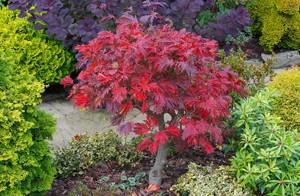
The optimal place for any type of maple is a light, slightly shaded area with moist soil. But the tree will not tolerate stagnant water. Before rooting the seedling, take care of good drainage made from stones and screenings. If the ground, on the contrary, is too dry, the leaves will become covered with a brown border and fall off.
Advice. Protect the maple tree from drafts in advance by choosing a place for it near a wall, fence, or fencing it around the perimeter of the site with conifers.
How to germinate Japanese maple seeds
Japanese maple seeds ripen in autumn. This is the time to pick them - when they are brown and dry and falling from the trees. You can plant both seeds that fell on the ground and seeds that you collected from a tree.
When planting Japanese maple seeds, it is important to pre-treat them before planting them in the ground. If you plan to plant the seeds outdoors in the spring, place them in a paper bag and store them in a cool, dark place throughout the winter.
If you plan to start them indoors in a pot, you can skip winter storage and start seed treatment right away. First, break off the wings from the seeds. Then fill the container with water that is very warm but not too hot to put your hand in and soak the seeds for 24 hours.
Then mix the seeds in a small amount of potting mix and place everything in a sealed plastic bag. Poke a couple of holes in the bag for ventilation and place in the refrigerator for 90 days to separate. After 90 days, you can plant the seeds in a container or directly into the ground.
If you live somewhere with cold winters, you can skip the refrigerator and just sow the seeds outdoors after soaking. The cold of winter separates the seeds just as well.
Many gardeners prefer to grow not only healthy vegetables and tasty fruits on their plots, but also ornamental plants that decorate the garden landscape. These plants include the exotic Japanese maple - a wonderful representative of the botanical world, with a bright spreading crown.
The tree attracts with its original appearance, however, the question arises whether this exotic beauty will be difficult to care for. To dispel doubts, in this article we will talk about the features of growing and planting Japanese maple in our climate: we will find out how to plant the plant and how to care for it.
Planting a plant
Japanese perennial is practically not propagated by vegetative methods. But you can grow it yourself from seeds, and then plant it in your garden in spring or autumn. To get seedlings you don’t have to do anything supernatural:
- soak the seeds for a couple of hours;
- prepare a pot with approximate dimensions of 10x10 (diameter and height);
- place the seeds in fertile soil to a depth of 4-5 cm. For each specimen - a separate hole;
- sprinkle with soil, cover with film or glass;
- place in a bright place without direct sun;
- Ventilate once a day by removing the shelter;
- plant in the ground when leaves begin to appear on the seedlings.
Caring for Japanese maple and its use in the garden
The plant requires regular, abundant watering. Make sure that the moisture does not stagnate and the soil does not dry out. On particularly dry days, irrigate the tree crowns with warm water. For the procedure, choose the evening time.
Advice. Mulching will help maintain soil moisture.
For the first few years, perform formative pruning. In the future, remove only frozen, diseased, broken branches or shoots that greatly thicken the crown. Do this before or after wintering. From spring to mid-July, feed the maple monthly with complex mineral mixtures that do not contain nitrogen - this component is harmful to the perennial. There will be almost no need for pest control. If the crop is bothered by gall mites, remove damaged leaves.
Japanese maple can be used in original bonsai-style garden compositions or as an accent piece in the front garden. This beautiful exotic perennial harmonizes with ivy, honeysuckle, clematis, azalea, magnolia, and hydrangea. Also, thanks to its elegant appearance, maple will decorate rockeries, mixborders and any body of water.
Acer JAPONICUM - Japanese maple.
Can be grown in bonsai style!
Description:
Maple is one of two genera of trees and shrubs from the Maple family. Represented by more than 100 species and a huge number of varieties and forms growing in North and Central America, North Africa, the southern half of Asia, and throughout Europe. The second genus of the family, dipteronia, grows only in China.
Maples are dioecious plants with small yellow-green flowers. There are 4-5 petals and sepals, sometimes the first ones are missing. Maple fruits develop from flowers and have a special structure. The unripe fruit consists of two small winged fruits, directed in different directions and fused to each other. But, having matured, they become separated and fall separately. It begins to bloom after the leaves bloom or at the same time as them. A blooming maple is always noticeable from afar, because... in the crown of the tree, on bare branches, yellow-green inflorescences resembling loose lumps can be seen.
Early shoots are distinguished by the color and shades of the bark. Maple leaves are large, rounded-angular in shape, with pointed protrusions along the edges. Such leaves are called palmate-lobed. The leaf blades always have ray-shaped veins. In autumn, instead of green, maple leaves acquire purple, yellow, pinkish, and brown colors, which immediately classifies the trees as decorative.
The root system is predominantly superficial. Maple reproduces by seeds and shoots. It is photophilous and uses a jeweled leaf mosaic of the crown to maximize light collection. Heat-loving, drought-resistant, suffers from frost in severe winters. Maple lives 150-200 years. But there are also centenarians who live up to 600.
Interesting:
Maple is characterized by the ability to germinate seeds quite early. On sunny days, seeds can germinate even at zero temperatures. Roots appear right on the snow and a little later begin to grow. This is not found in any other tree.
It is impossible to ever see any damage caused by beetles or caterpillars on maple leaves; for unknown reasons, they do not touch the foliage of this tree. Maple has the ability to “cry”: even with a slight increase in air humidity, droplets fall from the petioles of the leaves. As a rule, this happens a few hours before it rains.
Japanese maple
- a plant with beautiful, graceful leaves. The color of the leaves changes throughout the growing season - from spring to autumn. If in spring and summer they are bright green, then in autumn they turn burgundy, cherry, orange, and yellow. Unfortunately, this variety is not highly frost-resistant; in the northern regions it can only be grown in greenhouses and winter gardens in tubs.
Care:
Most maples are drought-tolerant and can tolerate dry soil, but grow best when watered. The watering rate during the dry season is 15 liters per plant. After landing - double the norm. Usually watered once a month, in dry times - once a week. They loosen irregularly, more often while weeding or after watering, to avoid soil compaction. Loosening should be done carefully to a shallow depth, since all maples have a superficial root system. After planting, the tree trunk circles are mulched with peat or soil in a layer of 3-5 cm.
Dry and diseased branches are systematically removed from maples. Sometimes variegated maple varieties and varieties with brightly colored foliage develop side branches with green foliage. They must be regularly cut down to the base of the shoot, otherwise these shoots absorb a significant part of the nutrients, inhibiting the growth of the decorative part of the plants.
Feeding of maples is carried out annually 3 times a year. In mid-May and mid-June, when loosening and watering, apply Kristalon universal
according to the crown projection at the rate of 50 g per 1 m2 and, in early September,
Fertik Lux
50 g per 1 m2.
Most types and forms of maples grown in Russia are winter-hardy and do not require additional shelter for the winter. For many cultivars, it is enough that they are planted in places protected from the wind. During harsh winters, the root collar of young maple seedlings should be covered with spruce branches or dry leaves. If annual shoots are damaged by frost, they must be pruned. The crown soon recovers due to new shoots that manage to become lignified before the onset of severe frosts. In central Russia, frosting of young shoots of some forms of maple is possible. However, with age, their winter hardiness increases.
Reproduction:
Maple seeds need stratification: they are aged for 3-4 months in a cold environment at a temperature of 4-5° C. At home, the seeds are placed in the refrigerator in late autumn or winter and planted in the spring. In our store, seeds are stored in a cold environment; when purchasing, check the time of cold stratification.
Before planting, the seeds are sawed off (scarified) and soaked in hot water for 24 hours, then sown superficially and sprinkled with a thin layer of soil. Moisten with a spray bottle and cover with film.
After 2-3 days, the seeds are placed (optional) in a cold environment with a temperature of 4-5 ° C (refrigerator). After 3-4 weeks, the planting container is moved to heat and germinated in the light at a temperature of 21-22°C. The seedlings need ventilation. It is necessary to avoid waterlogging and drying out of crops.
general description
Of course, the very peak of the beauty of trees occurs when leaves of the most varied colors bloom on them: green, red, golden. Already from the name it is clear that Japanese red maples came to us from Japan. There are modern garden centers in Korea that offer about a hundred forms and varieties of Japanese trees. Some of them are grown in Russia. These trees can vary in size.
Norway maple in parks and squares , which is a typical representative of perennials growing in European latitudes.
The Japanese species is slightly different from the usual holly. This shrub has gained great popularity among gardeners due to the attractive appearance of its leaves. Due to its bright crown, the maple blends well into any garden park area, making it more picturesque at absolutely any time of the year, even in winter.
Despite the fact that the bush is quite compact, its leaves are large and palmate along the edges . What makes it more attractive is the bark, which is painted in a pleasant gray shade, the surface of the bark is smooth, there are no cracks. In April, the plants bloom, forming bright purple inflorescences on the branches.
Japanese red maple is listed in the Red Book of Russia, but it can still be found in the Sakhalin region.
Botanical description of the species
This deciduous tree or bush belongs to the perennial species of the Sappindaceae family, genus Maple. This is one of more than 150 varieties that came to our region straight from Southeast Asia, mainly its homeland is the Land of the Rising Sun and Korea. The size depends on the variety you choose, with the average maximum height attainable being 2–10 m.
Did you know? Japanese maple is included in the Red Book of Russia due to its rarity.
The leaves are small, arranged oppositely, the shape resembles a fan or palm tree, but smaller. The color varies from bright red to rich burgundy, the intensity of the shade is affected by the quality of lighting. The flowers are small, often purple-red or green-yellow, and appear mainly in April. After flowering, they turn into lionfish with seeds that are carried by the wind, and subsequently new trees grow.
Common types and varieties
When talking about Japanese maple trees, we most often think of three main types.
These varieties include :
- Shirasawa maple (Shirasawa).
- Japanese maple.
- Fan maple atropurpureum.
Planting and caring for these species are quite simple, even when grown in the Russian climate.
The Japanese fan type got its name due to the unusual structure of the leaves, so this variety can become the main highlight of any square or park. The leaf plates are presented in the form of an open palm or fan. In June the leaves turn bright red. Plants grow up to 2 m in height. This species has many different varieties, among which the most popular are :
- Garnet.
- Aconitifolium.
- Bloodgood.
- Nicholsoni.
- Orange Dream.
By the way, the most expensive variety is Bloodgood. It is prized for its blueberry-colored leaves. The price of one tree starts from $2,000.
Unlike other species, Shirasawa maple boasts a variety of colors, ranging from yellow to burgundy. This tree can grow up to 15 m in height, while the trunk in diameter in an adult specimen reaches 60 cm. The most popular variety is Dissectum Nigrum , which has black and red foliage that harmonizes perfectly with bright green lawns. This variety is quite often used in landscape design.
How to care
Let's look at the main points for caring for Japanese maple growing in the garden.
Watering
The tree needs watering. However, the plant will also not tolerate too much water. If you allow moisture to stagnate in the soil, this can lead to rotting of the maple roots. In addition to regular watering once a month during the summer season, it is necessary to organize additional watering for the maple: in this case, 15 liters of water are poured at the root at a time.
If there is a severe drought, then it is recommended to additionally spray the maple with a sprayer so that its leaves do not lose their decorative properties. But this information will help you understand how to use irrigation hoses and how to choose them.
Mulching
Mulching is of great importance for a tree: this procedure must be carried out both in spring and autumn. Use humus, tree bark, wood chips, and compost as mulch. The procedure helps the tree roots to have constant access to moisture, protects the roots from freezing in winter, and is also an additional feeding and protection against weeds.
Trimming
In the first years of its life, the plant must be pruned regularly to form a crown. And then you can no longer trim, but only remove diseased and broken branches.
But pruning is also recommended when the tree’s crown becomes very thick and has lost its former decorative appearance. In this case, thinning and pruning will help restore transparency, airiness and lightness to the crown. In addition, such thinning can protect the plant from fungal infections. Prune the plant only during the dormant period: either in early spring or before the onset of winter, when the leaves have already fallen. And here you can learn in detail about pruning Azaleas.
Top dressing
In the spring, it is necessary to apply granular mineral fertilizers under the tree, and only then cover this fertilizing with a mulch layer. Keep in mind that the mineral complex should not contain nitrogenous components, since they are not suitable for Japanese maple.
If the soil is fertile enough, then one feeding will be enough for a year. If it is scanty, then it is necessary to feed the tree again in the summer. But you can feed the plant only until August. Then the application of any fertilizers must be stopped, as the maple needs to begin to prepare for wintering.
Winter care
If the climate in your area is not mild, be sure to cover the Japanese maple for the winter. It is recommended to choose garden fleece as a covering material, as it is the warmest and softest material. If there is a lot of snow in winter, then regularly free the maple branches from this heavy precipitation.
Otherwise, the branches may not be able to withstand it and break. However, you should not touch the tree when the branches are covered with an ice crust after a thaw: in this case they are especially easy to break.
Planting and care
Japanese maple trees in their natural habitat, in their homeland, usually grow in the undergrowth; accordingly, for normal life and normal growth of the plant, appropriate conditions must be created.
The soil must be sufficiently noble and sufficiently fertilized. In no case do Japanese maples like stagnant water. Therefore, in the garden where it grows, it is necessary to provide drainage, because stagnant water can harm the root system.
The variegated color of maple leaves indicates that they love sunny places , so this fact must be taken into account when planting. In our conditions, Japanese maple trees suffer most from late spring frosts. Even when the leaves have blossomed, but frost unexpectedly sets in, the Japanese guest may suffer.
Speaking about whether it is possible to grow Japanese crops in our conditions during fairly severe winters, it is worth noting that some varieties can withstand temperatures down to minus 20 degrees . If there is an assumption that the temperature will drop lower in winter, then you need to try to make a shelter for the tree. This is not difficult, because if a low variety is grown, 2-3 meters high, then a frame is made, and a special insulating fabric is stretched over it.
A very important point in caring for Japanese crops is timely mulching . Mulch is usually applied twice in the spring and fall before the onset of winter. Spring mulching has its own characteristics. The fact is that before laying mulch in the tree trunk circle, you first need to apply some slow-acting fertilizer. Then cover it all with a layer of peat and cover it with a layer of any mulch on top.
Landing
Like any incredibly beautiful tree, maple has the right to its whims, the main thing is to follow all the planting rules so that it is guaranteed to take root, which is worth talking about in more detail.
Video: planting Japanese maple
Rules and process of planting a seedling
To grow the tree described, you should follow a few simple rules: choose the right place for planting, time of year and seedlings. It is recommended to purchase planting material in a special container in order to plant it in the soil along with a lump of earth, thereby protecting the root system from possible damage. The optimal time for planting is considered to be from early spring to late autumn.
Japanese red maple is impressed by a large amount of diffused sunlight, but not direct midday light - it is advisable to plant it in the shade of a taller tree . In addition, it is worth limiting contact with drafts and strong winds, which planting coniferous plants around the entire perimeter of the garden will help to cope with. As for the soil, the shrub is relatively undemanding. An unfavorable choice would be soil with high alkalinity, constant stagnation of moisture and lack of water permeability.
Reproduction methods
Propagating a plant is not so difficult on your own.
mainly 2 methods of maple propagation :
- Seeds. But when planting by seed, the seed necessarily requires preliminary starting. This procedure can be carried out under artificial conditions if the seeds are placed in the refrigerator. There they should lie for at least a quarter, the temperature in the refrigerator should be from 0 to +4 degrees. But this can also be organized in natural conditions. To do this, in the autumn, you need to collect ready-made impellers from the bush, which are then broken off. Each half contains a seed. This seed is not placed too deep into the soil - 3-5 cm, after which sprouts appear after some time. It is recommended to cover young shoots for the winter, and with the arrival of spring days they will begin to develop further, and the most powerful, strongest ones can be selected and planted around the site
- For industrial propagation, cuttings and grafting onto ready-made root systems are used.
When planning the cultivation of maple, it is necessary to take into account the fact that it likes to grow in well-lit areas, it is quite demanding on the composition of the soil : it prefers rich soil mixtures with a good nutrient medium, it does not tolerate sandy and rocky soils, or too dense soils very well.
The tree needs careful and regular moistening . But watering should be moderate so that moisture does not stagnate in the soil. You also need a good drainage layer. Expanded clay, crushed stone or broken brick are suitable for this.
Searching for seeds
Most often, gardeners use a mature tree seed - subsequently, this source can be given any shape without the need to change the already formed system.
The collection is carried out after the “helicopters” ripen and fall from the branches in the autumn. True, such material is not ready for planting: for the seeds it is necessary to arrange an imitation of winter rest in artificial conditions. To do this, take a container with a tight-fitting lid, place wet sand in it, into which the seeds are buried, close the container and place it in the refrigerator. The stratification period is 100-120 days; in the spring the collection is ready for planting.
If you want to grow a natural decorative item at home, but don’t have time to collect seeds, you should contact specialized stores that offer ready-made planting material for Japanese and other types of maple. Blue, light blue, and red bonsai are obtained only from specially bred plants.
A faster way to get a decorative tree is to plant cuttings.
Preparation of planting material
To make the seeds grow faster, their dense shell is cut and placed in warm water or 9% hydrogen peroxide for 2-3 days. In conditions of high humidity, intense absorption of liquid occurs and the seed comes to life.
To prevent the development of diseases of the tree embryo, the seeds are initially treated with a dry or liquid fungicide.
Preparing the soil and container
To grow maple bonsai at home, it is important to properly prepare the soil. For maple, take an equal ratio of alumina, humus and sand.
An important stage is soil disinfection. Best ways:
- Heat treatment at high temperatures. To do this, the soil is heated in the oven, microwave or in a water bath, then cooled, dried and sifted through a sieve.
- Another method is freezing and then thawing the soil.
- The use of biologically active additives such as “Fitosporin”, “Barrier”, etc. They are sold in specialized flower growing stores.
During processing, pathological fungi, mold, insect eggs and other infections that can harm the plant die. After the procedure, fertilizer is introduced into the soil to restore beneficial microflora.
For the first time, you can take a small bonsai pot - growing a tree is no faster than in natural conditions, so as it grows, it is changed to a larger volume.
The container is thoroughly cleaned with non-aggressive substances, washed and dried. There must be drainage holes in the bottom of the pot. To avoid soil washing out, it is recommended to line the bottom with mesh.
Planting seeds
Soil is poured into the prepared container, leaving 3 cm to the edges of the bonsai. If there are several seeds, they are placed at a distance of at least 1 cm from each other. The resulting layer is pressed with a board, then soil no more than 3 seed diameters thick is poured on top. The planting is lightly watered and the container is covered with glass or polyethylene to allow light to pass freely and retain moisture.
After the first shoots appear, the glass is lifted and several holes are made in the film to supply fresh air.
After the leaves have formed, young shoots are planted in fresh soil at a distance of 2-3 cm.
Application in landscape design
Despite the fact that Japanese maple is a foreign plant and quite expensive, it is widely used in landscape design. In recent years, gardeners have acquired a new fashionable trend, which is to create small Japanese gardens.
The idea is to plant Japanese varieties of wood along the alley , thus creating a gradation of shades, ranging from yellow to blueberry. Such gardens can be called a real paradise for perfectionists and aesthetics.
This tree will look quite unusual with ornamental plants, as well as near artificial ponds and natural stones. Gardeners often grow low-growing varieties in containers, as if they were a simple houseplant. In the warm season, such varieties can be taken out onto the terrace, thus making it more attractive and bright.
In those regions where there is a cold climate, Japanese trees are usually planted in tubs , which are brought into a not too hot room in winter. Growing in tubs is an advantage, as it allows you to move the plants if necessary, protecting them from rain, sun, hail or wind.
Since many varieties are low-growing, in Japan it is customary to install them on a special stand so that all the attractiveness of the shrub is better visible.
The peak of maple decorativeness occurs in the autumn. Bright leaves will go well with autumn flowers: asters, oaks, chrysanthemums. As neighbors for a foreign guest, you can plant boxwood, juniper and various ornamental coniferous shrubs.
Reproduction methods
Propagating the plant yourself is not difficult. Basically, as with any ornamental plants, two methods are used: seeds and cuttings.
Seeds
This option is the most common. The seed material must be fresh, it is collected immediately after ripening, which most often falls in October. The “harvest” is placed in a dry bag and stored in a cool place. In spring, seeds are planted in one or more containers, pre-treated with a growth stimulant.
Did you know? In total, about 20 varieties of maple are grown on the territory of the Russian Federation. Basically, they are located in the European part of the country, and are completely absent in Siberia.
Over the summer, the seedlings do not add too much growth, but it is already possible to divide them into strong and weak. The latter can be removed and destroyed, and the rest can be stored in a cool place, but at above-zero temperatures. With the arrival of spring, the material is planted in pots on a permanent basis , and when they reach a height of 30 cm, they are planted in open ground.
If you prefer growing in tubs, please note that the substrate must be rich in organic fertilizers. The main advantage of this method is that there is a 100% chance that some of the seedlings will be strong. The disadvantages include painstaking care and a lot of time.
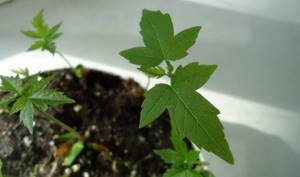
Cuttings
The time for the procedure is early autumn. Cuttings are cut from an adult tree; their height must be at least 25 cm. Planting material with two leaves, which must be shortened by half, is kept for several hours in a growth stimulator before planting.
Planting should be done to a depth of 5 cm; it is recommended to thoroughly loosen the planting hole. The soil should be moderately moist and light; for this, drainage and mineral fertilizers are added to the hole. Most often, the mixture is prepared from leaf soil, peat and river sand in a ratio of 3:2:1.
In the spring, the sprouted material is transplanted into a new substrate and fed with urea, potassium supplements and superphosphate. In addition, at first you will need abundant watering every 15 days. The minimum volume of water per tree is 30 liters per month. In the future, the amount of moisture is reduced to 15 liters once a month. With the onset of cold weather, the seedlings are covered and mulched. The method is not popular due to the minimal likelihood of reproduction, even if all steps are followed correctly.


